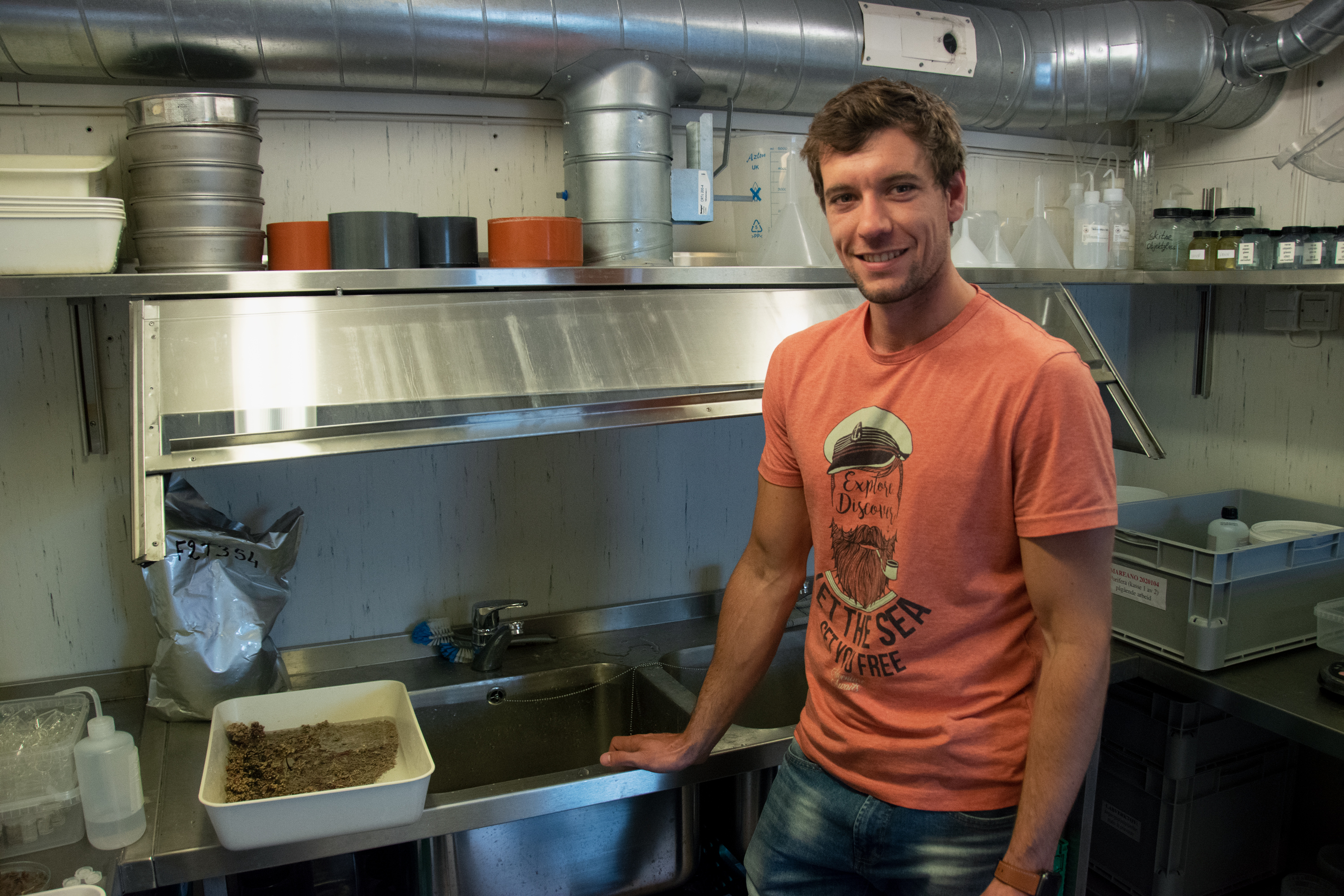Studying the environmental impacts on a little known habitat

Maerl beds are a rich habitat for animals such as mussels, sea urchins, starfish and bristle worms.
Photo: Erling Svensen / IMR
In the lab, post-doc Erwann Legrand investigates which species are present in the maerl bed samples.
Photo: Runar Bjørkvik Mæland / IMR
Tiny sea urchins and mussels are two of the most common things found in amongst the maerl.
Photo: Runar Bjørkvik Mæland / IMRPublished: 15.07.2020 Updated: 06.08.2021
“Maerl beds are found all over the world, and in many countries they are protected. But not in Norway. Here, little is known about them”, says Erwann Legrand, who is leading the research project.
Legrand did a PhD on maerl beds in France before coming to Norway to join the Institute of Marine Research. For the second year in a row, he and other scientists recently visited the Lofoten archipelago to take samples of maerl beds, which they found in great abundance.
“This habitat is probably present in many places along the Norwegian coast north from Trøndelag, perhaps including some of the biggest maerl beds in Europe”, says the French scientist.
Ecosystem engineer
Maerl beds consist of layer upon layer of a coralline red algae, maerl, that forms thick carpets on the seabed in shallow waters. The living maerl, which are pink in colour, grow on top of the dead, white algae, swaying back and forth with the current and providing a habitat for bivalves, bristle worms, crustaceans and sea urchins.
“Maerl is what we call an ‘ecosystem engineer’: it creates structures that provide an environment for other species”, explains Legrand.
This is the habitat that the scientists now want to learn more about, including how abundant, and how vulnerable, it is.
Here Erwann dives for maerl beds in France:
Little is known about the impacts of aquaculture
In Lofoten, the scientists have taken samples of the maerl beds from areas both with and without aquaculture. The aim is to find out how, and to what extent, the coralline algae and the animal community around them are affected by emissions from the farms. Currently, little is known about this.
“Laboratory studies have shown that emissions can have negative impacts on the growth and survival of coralline algae. However, it is important to investigate how this works under natural conditions”, says the IMR researcher Vivian Husa.
She believes that the study is particularly important because salmon farming is now a growing industry in northern Norway. Maerl beds, which thrive in shallow waters up to 30 metres deep, are more common there.
Emissions may block light and prevent growth
Erwann Legrand explains that coralline algae require light in order to grow. Particles released by fish farms can stop the light reaching them and hence reduce or completely prevent their growth. They may also be harmful to some of the species that live on and around the maerl beds.
On the other hand, some animals may be attracted to the area by the nutrients in the emissions.
These are some of the effects that the scientists hope to understand better once they analyse the samples they have taken in Lofoten.

Move samples between areas
In addition to surveying biodiversity and the physiological samples of the coralline algae, the researchers are also carrying out so-called transplantation studies. This involves “transplanting” maerl core samples from areas without aquaculture to areas with aquaculture, and vice versa.
The samples are collected in custom-made baskets that keep the whole animal community intact. Next year the scientists will return to see how they are doing.
“This gives a more accurate picture of how the coralline algae and animal community that lives amongst them are affected”, explains Vivian Husa.
New, important research
Erwann Legrand hopes to present the results at an international conference on maerl beds in Newfoundland next year.
“To date, research on the vulnerability of maerl beds has mainly focused on the impacts of climate change and ocean acidification. Very little research has been done on the impacts of aquaculture, so quite a few people are interested in what our results will show”, says the research scientist.

